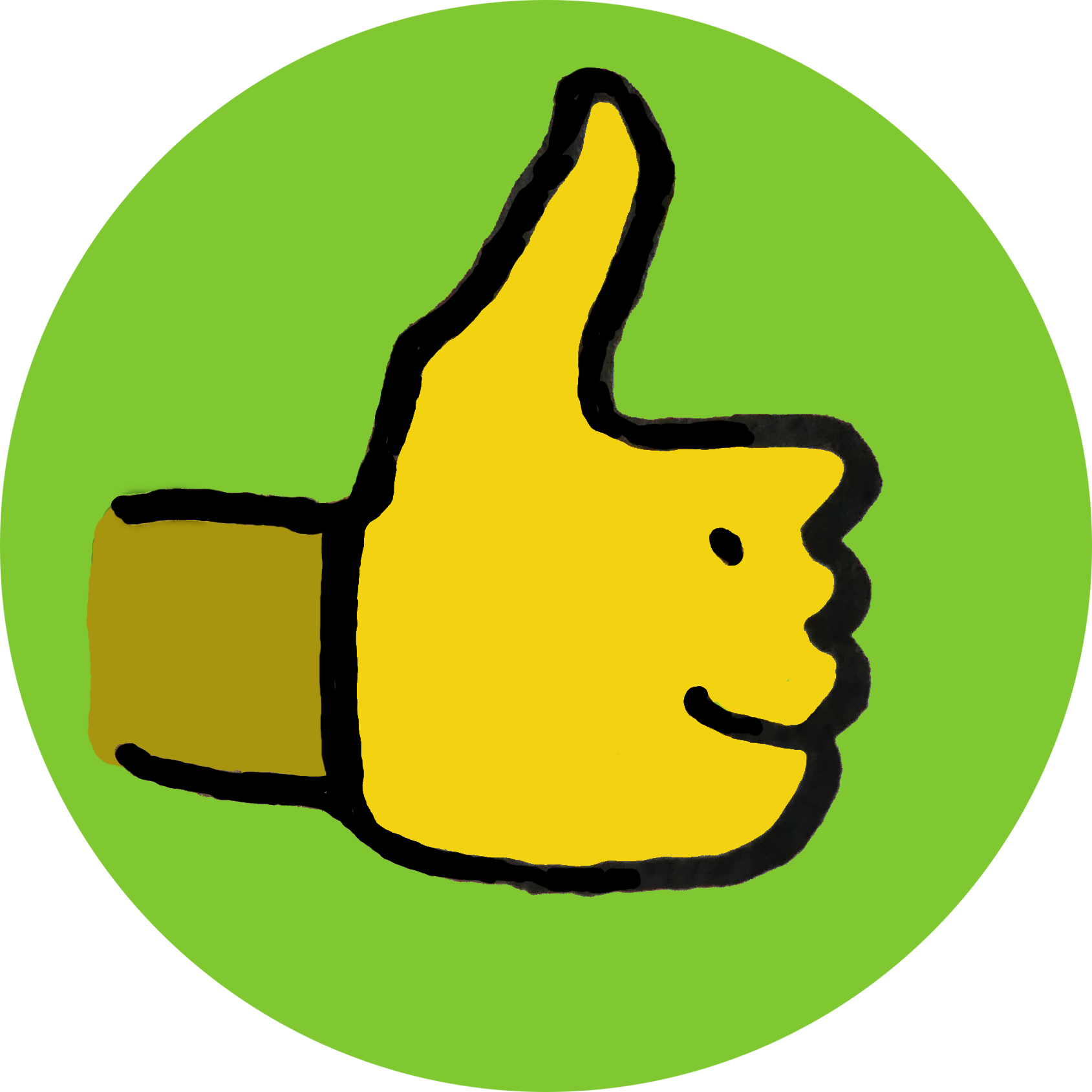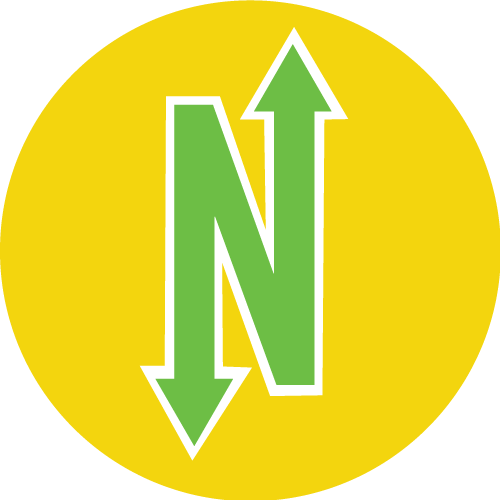14 September 2024
What stories do you know about your grandmother?
Just One Question #1
To participate in Just 1 Question, and receive the issues one week early, sign up here.
Snake Act
My grandmother was a vaudeville and sideshow performer in the early 1900s. She performed as the Amazing Ruth with a pretty sizable python named Elmer. Elmer was dropped from the act in 1922 when he ate the neighbor’s cat in Sarasota.
Jamis
Inadvertent Twister Model
She worked as the controller (kept the books) for an old beloved amusement park in Denver called Elitch Gardens. They were getting ready for the grand opening of a first of its kind roller wooden coaster called The Twister. The day before opening day they hired a model and a photographer to capture the first ride for the front page. As she told it, at the last second the model panicked and refused to ride. My grandmother volunteered to sit in and became the cover story.
Backstory: She was in her 30s when this happened raising 3 kids on her own. She grew up in Nebraska, daughter of a florist, and as a young girl her mother (widowed early) would save up to take her on the train to see the annual flower show. Low and behold she overcame great odds – teen pregnancies, domestic abuse, a decade of mothering through poverty – to land that dream job in which was the first chapter of stability my mother knew.
When I think of my grandma I am in awe of how she maintained such a playful spirit through so much struggle. Not just because of this story but because of the fun loving, laughing time I had with her as a child, as a teenager, as a young woman, and a mother myself.
Ashley
Left-handed Red Diaper Baby
Roz went to a Communist summer camp in Ontario (Canada) when she was a young girl. Back in the city, at some point she was forced to switch from left to right-handed in order to conform. These two stories don’t appear to be related to each other on the surface.
Elliott Fienberg
Untold Secret Story
My mom’s mom’s abusive marriage to an alcoholic husband became scarier when she got pregnant, so she left him and got an illegal abortion that nearly killed her. This was decades before Roe, decades before women were allowed to open their own bank accounts. She rented a room in a house and met a younger man who was renting a room nearby.
He became my Grandpa, who treated her with respect and kindness. They were unable to conceive, likely something related to her dangerous abortion, so they adopted my mom. She has not told the story to any of my siblings, and I’ve been bursting to tell it for years.
Anonymous
The Rolling Pin
My most vivid memory of my grandmother was from a Christmas Day when I was about 17. We were chatting about her journey to America from Ljubljana, then part of Austria-Hungary.
Born in 1899, she was slightly younger than I was when she made the crossing. Her voice grew quiet as she recalled that it was the day after a German U-boat sunk the British ocean liner Lusitania on May 7, 1915. Her ship and others had searched for survivors but found none.
She didn’t speak much about that voyage, and I regret not asking more questions during her lifetime. One of my most treasured keepsakes is her solid maple rolling pin, which she brought from her homeland.
Now, when I’m making pies using that same rolling pin, I think of her trans-Atlantic journey during wartime. It’s a simple object, but it connects me to her story and the courage it took to leave everything behind for a new life.
Terri Lonier
Movie Theorist
My grandmother loved to watch movies and she had a theory that in every movie someone throws up, brushes their teeth, or eats an apple. It’s so funny but I think of her any time I see someone do any of those three things in a movie.
Elisabeth Coffey
09/14/2413 September 2024
Mac Moss, Graphic Designer
Show and Tell #408: Mac Moss
Mac Moss is an Idaho based graphic designer who operates his own one man studio known as mm.s. Heavily inspired by science fiction and the American West, his work has naturally drifted into predominantly the outdoor industry. Outside of work, Mac races competitively at ultra marathon distances.
TOOLS:
0:00 – Intro
1:01 – Ultrapire Running Belt
6:02 – Albion Insulated Jacket
11:08 – Norda 02 Running shoes
16:43 – Radio Garden
21:49 – Mac Moss Studio
To sign up to be a guest on the show, please fill out this form: https://forms.gle/qc496XB6bGbrAEKK7
09/13/2412 September 2024
Get Paid to Live in Spain/End of EU Passport Stamps/Museum of Death
Nomadico issue #121
A weekly newsletter with four quick bites, edited by Tim Leffel, author of A Better Life for Half the Price and The World’s Cheapest Destinations. See past editions here, where your like-minded friends can subscribe and join you.
* Special Announcement: If you’re a premium subscriber, you should have an e-book download link in your inbox to get Nomadico: the First Two Years. If you’re not premium, sign up now to support our work and you’ll receive it too!
Get Paid to Commit to Rural Spain
We’ve discussed several schemes that destinations are running to get remote workers to move there, but a newly announced one in Extremadura, Spain is attractive if you’re ready to stay put for a while. If you’ll move to a village with less than 5,000 people, you get €10,000 the first year, another €5,000 if you stay for two. If you’re under 30 and move to a more populated place, you get a bit less. Rents are available for a few hundred euros a month and there’s plenty of good wine and Iberian ham at bargain prices in this region next to Portugal. See the details here.
Goodbye to European Passport Stamps
If you want to add a European stamp or two to your passport, you’ll need to touch down before November. After that it’s all electronics and facial recognition for entry to 29 EU countries and for figuring out how long you’ve been in the Schengen Zone. Get answers to your EES questions here.
Visiting the Museum of Death in Mexico
Hardly any foreign tourists seem to make it to Aguascalientes, Mexico, but the state produces some excellent wine and there are two notable museums in the capital city. One is devoted to the artist Jose Guadalupe Posadas, the cartoonist/lithographer who invented the whole Catrinas trend of skeletons in fancy clothing. The other is the excellent Museum of Death, which highlights Mexico’s unique relationship with the subject, told through its art. See my rundown on it here after my second visit recently.
Building Your Own Eurail Pass
Back in the dark ages when it was difficult to research train ticket prices, buying a Eurail Pass made a lot of sense. You purchased unlimited travel for a country or all of Europe in a specific period. Or you got a more flexible pass that was X days of travel over Y days/months. After recently purchasing five individual train tickets spanning six EU countries though, I’d say you’re probably better off buying individual tickets for what you need. My five fares, two of them around eight hours of travel, totaled €183. A Eurail pass that would have accomplished the same thing sells for nearly twice as much. Get started with Rome2Rio or Omio and then buy through their links or the individual train operator.
09/12/2411 September 2024
What’s in my NOW? — Dan Dao
issue #185
Sign up here to get What’s in my NOW? a week early in your inbox.
I’m a data analyst by day and an artist who draws people on his free time. Figuring out things is my biggest hobby. Check out @portraitclub_atx if you’re looking to draw with other people in Austin, TX
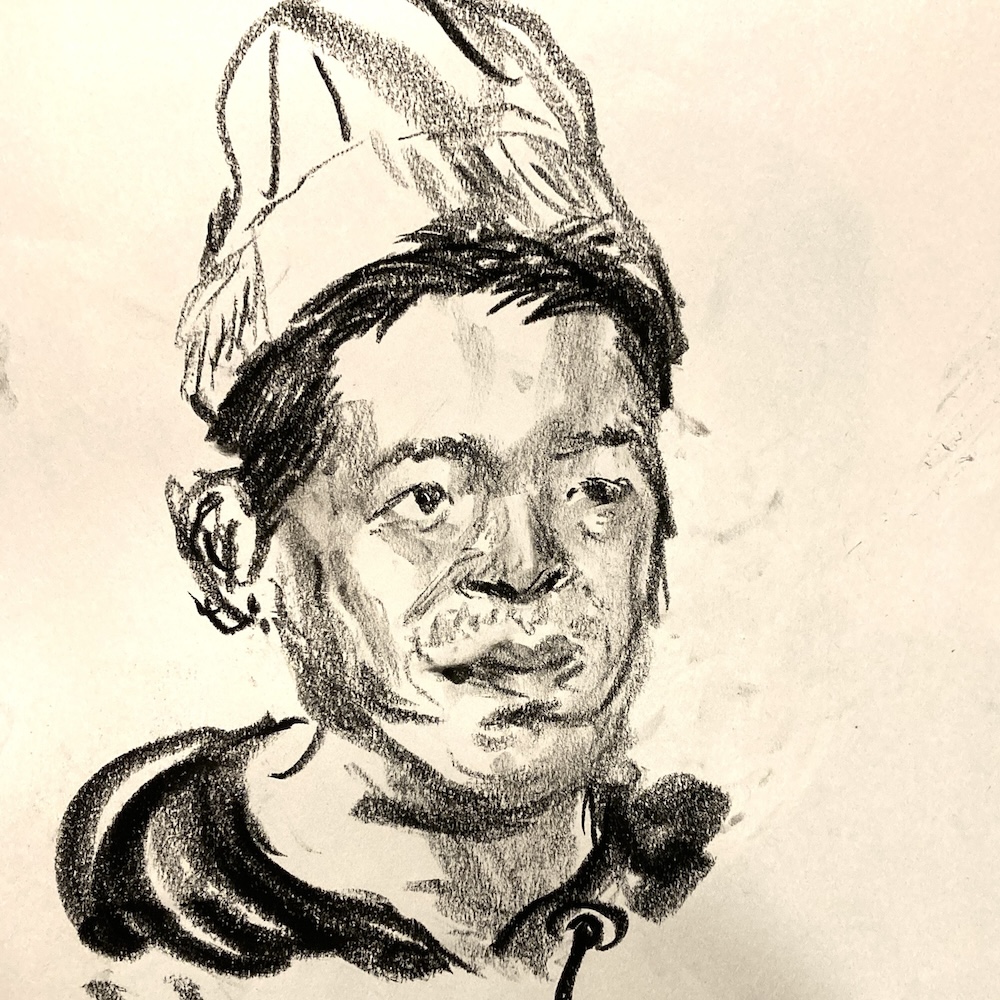

PHYSICAL
- I stopped using pump style lotion bottles because a good amount of lotion was left behind and hard to reach. My favorite solution has been FIFO (First in First Out) Squeeze bottles. They can be used store anything from ketchup to paint. There’s a large rear cap that makes filling the bottle simple and also helps when cleaning it out in the dishwasher. Another bonus is the valves are replaceable if they ever wear out.
- I still have a mix of old and new devices that need different USB ports to charge. The Anker Powerline II 3-in-1 cable covers 95% of all my devices with USB micro, C and Lightning ports. My old cable lasted four years of daily use, and Anker replaced it under their lifetime warranty.
- I’ve really enjoyed using fountain pens for drawing and writing the past two years. Fountain pens are endlessly customizable with different ink and nib sizes. The Pilot Varsity is a great first fountain pen if you want to try them. It’s affordable and writes wonderfully, as good as pens 4-5x it’s price. If you’re brave you can even refill it following some tutorials on Youtube.
DIGITAL
- I purchase products monthly from AliExpress and overseas. It can be a hassle to keep track of all the different shipping companies. 17Track covers most shipping companies and have apps on iOS and Android. The updates are timely and the app is simple to use.
- I use Whisper AI to transcribe meeting recordings on my computer for free. The transcriptions aren’t perfect but I’m really impressed by the speed and accuracy of the package. I followed this guide to get started.
INVISIBLE
A strategy I use to curb non-essential spending is to limit it to the first 10 days in a month. For the other 20ish days I’m forced to wait and evaluate my upcoming purchases for next month. I do give myself exceptions on things like great deals and limited available items though. Most of time I realize I already have something that suffices and that great deal will still be there in a few weeks.
09/11/2410 September 2024
Noisy Night / The Complete Middle School Study Guides
Books That Belong On Paper Issue No. 31
Books That Belong On Paper first appeared on the web as Wink Books and was edited by Carla Sinclair. Sign up here to get the issues a week early in your inbox.
NOISY NIGHT — A DELIGHTFUL READ ALOUD FOR THE PRESCHOOL SET
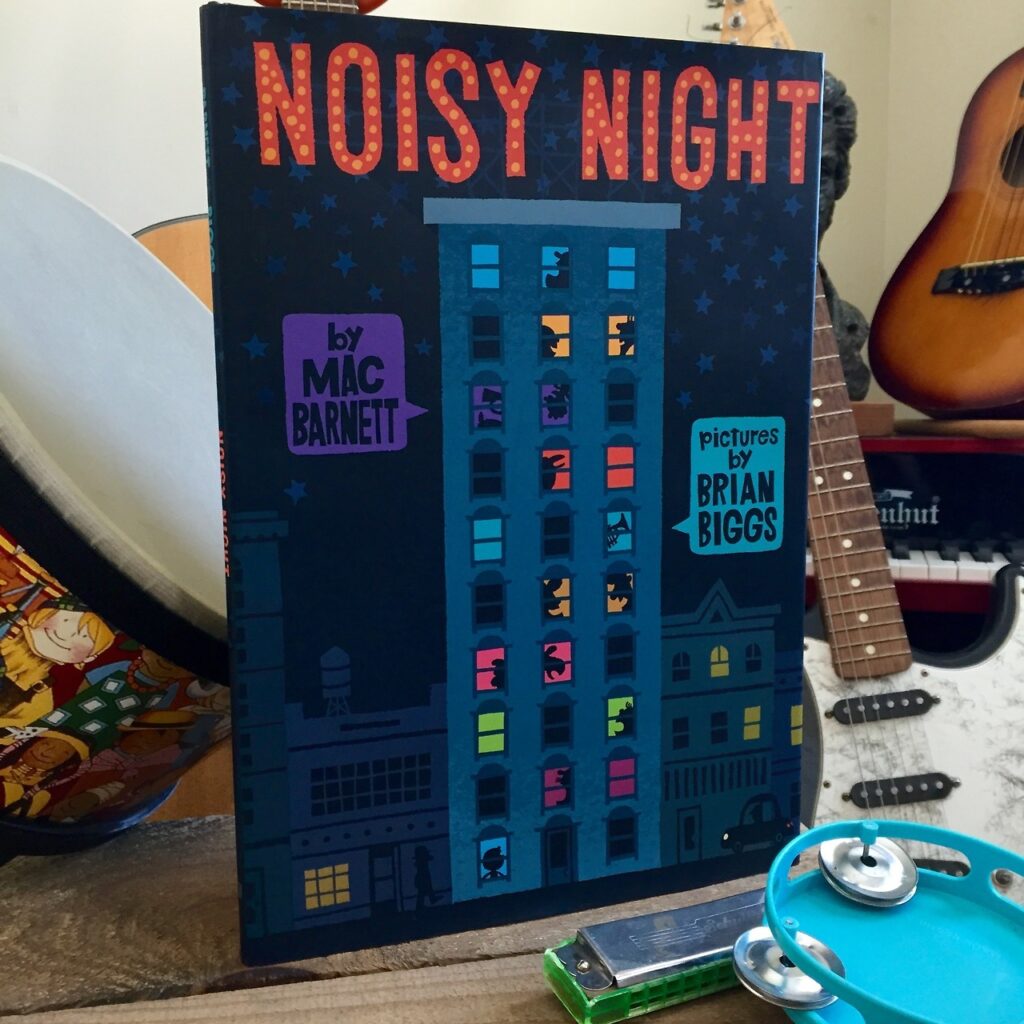
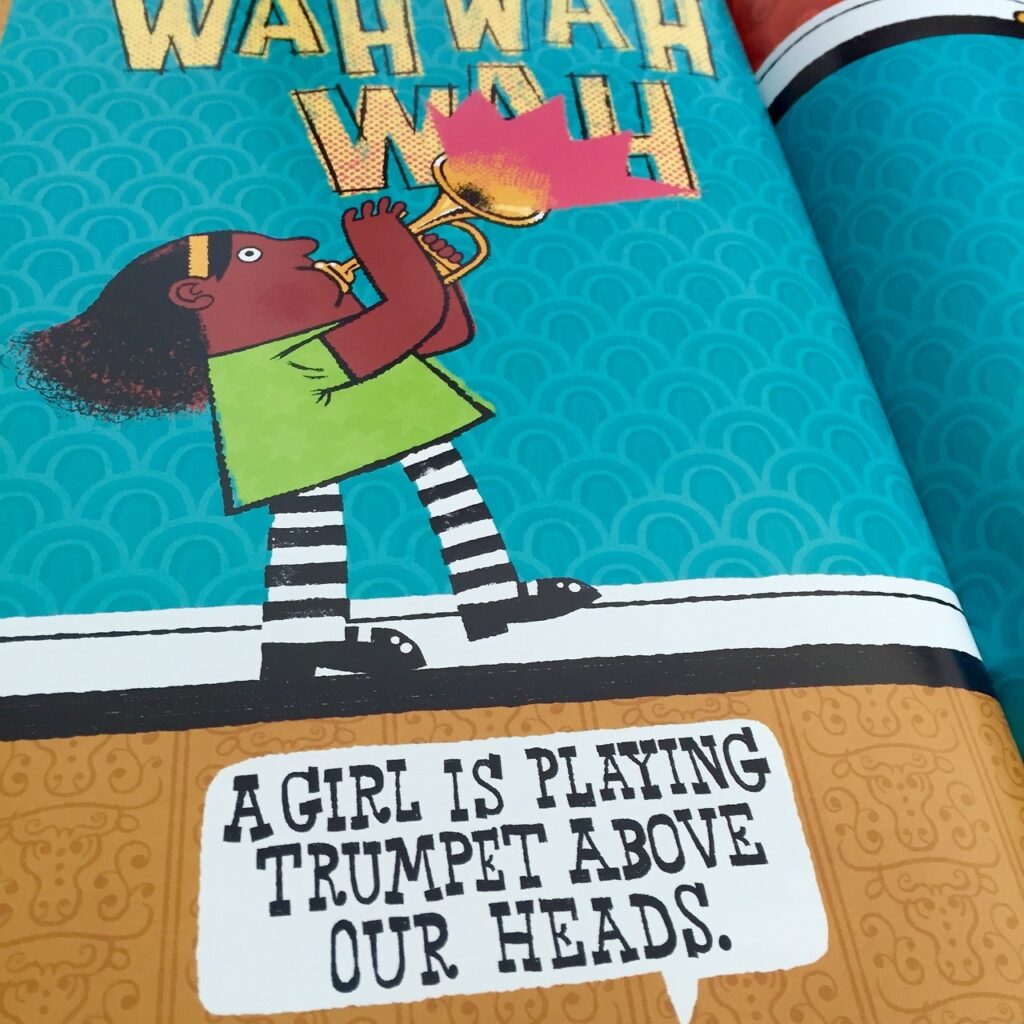
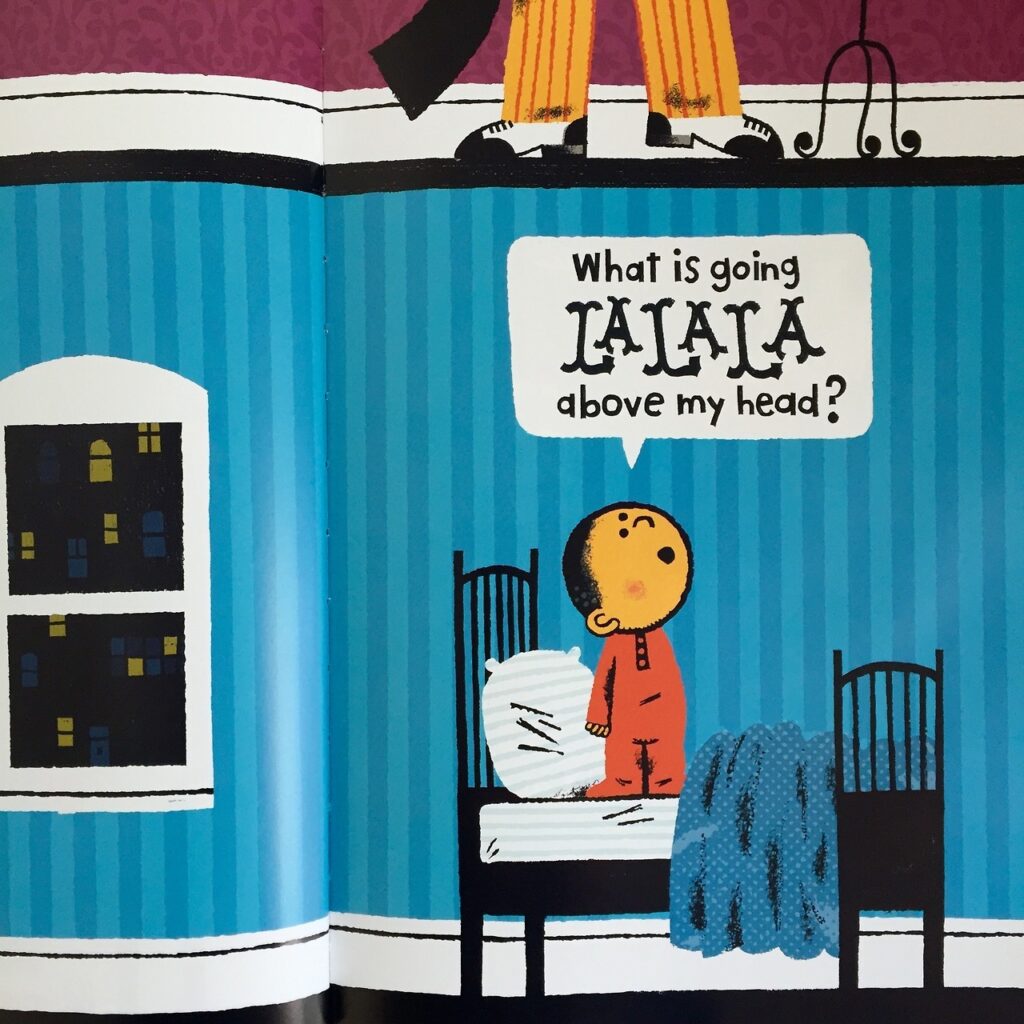


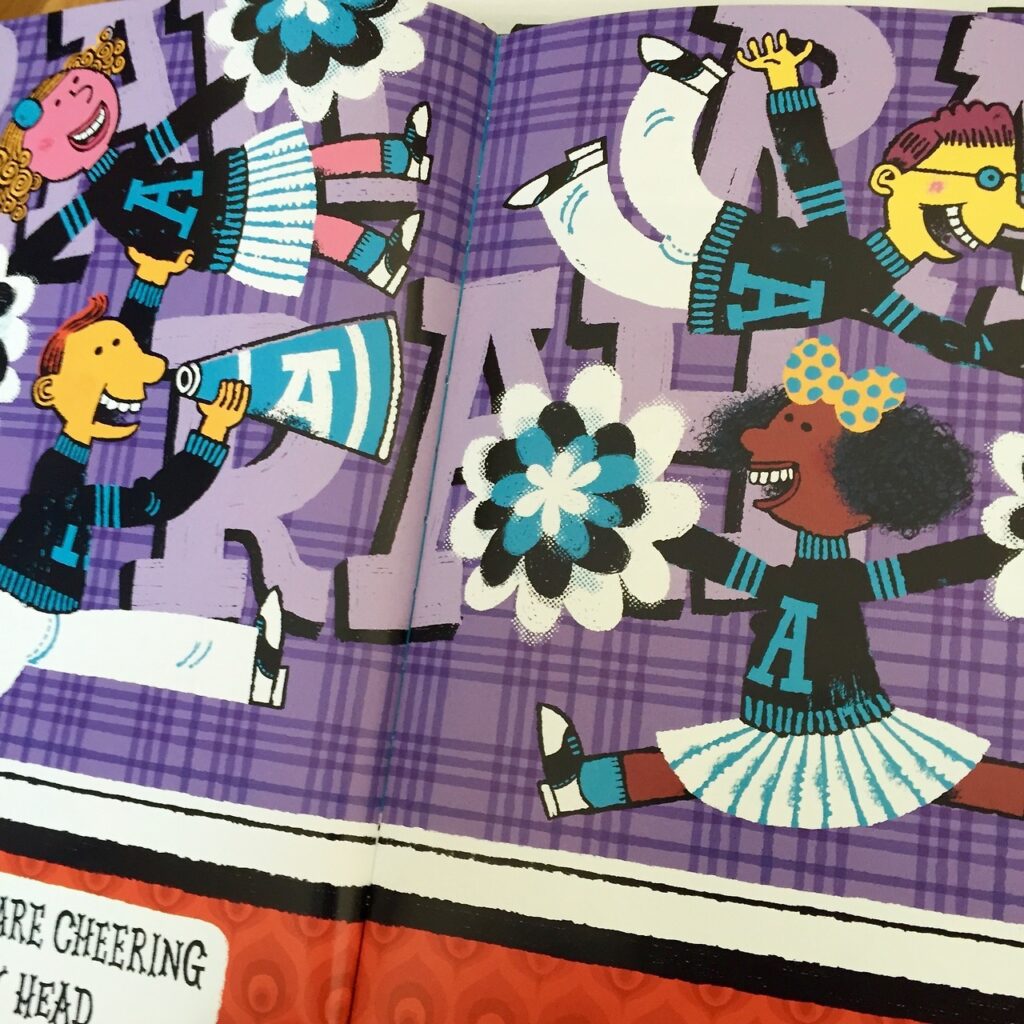
Noisy Night
by Mac Barnett, Brian Biggs (Illustrator)
Roaring Brook Press
2017, 32 pages, 8.3 x 0.4 x 11.6 inches, Hardcover
Noisy Night is a delightful read aloud for the preschool set. The book takes readers up, up, up through the floors of an apartment building and into the noisy nighttime goings-on of a silly cast of characters. For anyone who lives, or has ever lived, below someone in a building, this book breathes some fun into a familiar story.
Mac Barnett’s rhythmic, onomatopoeia-ic prose and Bigg’s illustrative sneak peeks make guessing the inhabitants of each floor easy for excited little ones, while the characters themselves (drawn to look just as loud as they sound) keep the story fresh. It’s easy to embellish the book with self-made sound effects since you can practically hear the music, not just of the actual musicians like the trumpet player and opera singer, but also of the sounds bouncing around the bright rooms in which guffawing cowboys, raucous cheerleaders, and elated cha-cha dancers let loose. The story ends with a final racket to quiet all rackets, the shouts of a grumpy old man. The book ends with the old man snoring soundly, and it’s hard not to imagine his now-shushed downstairs neighbors clutching pillows over their ears as this final nighttime noise echoes down to the ground floor.
THE EVERYTHING YOU NEED TO ACE SERIES IS LIKE BORROWING NOTES FROM THE SMARTEST KID IN CLASS
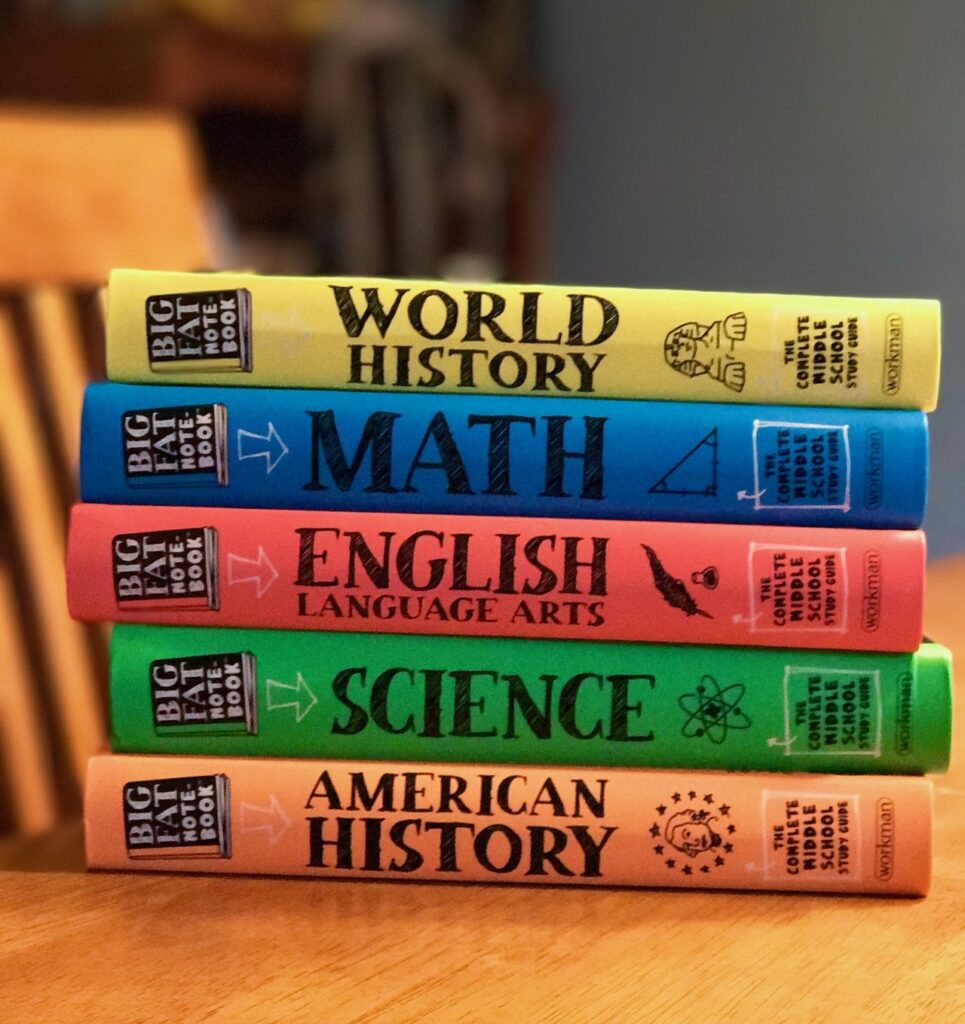


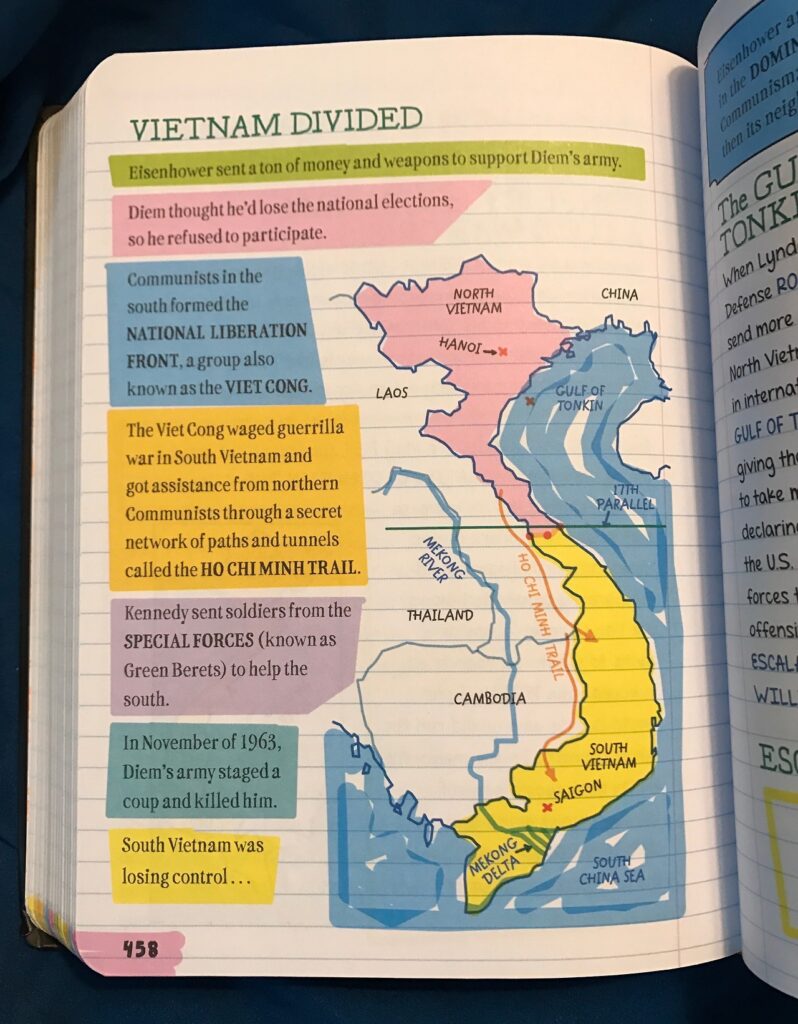
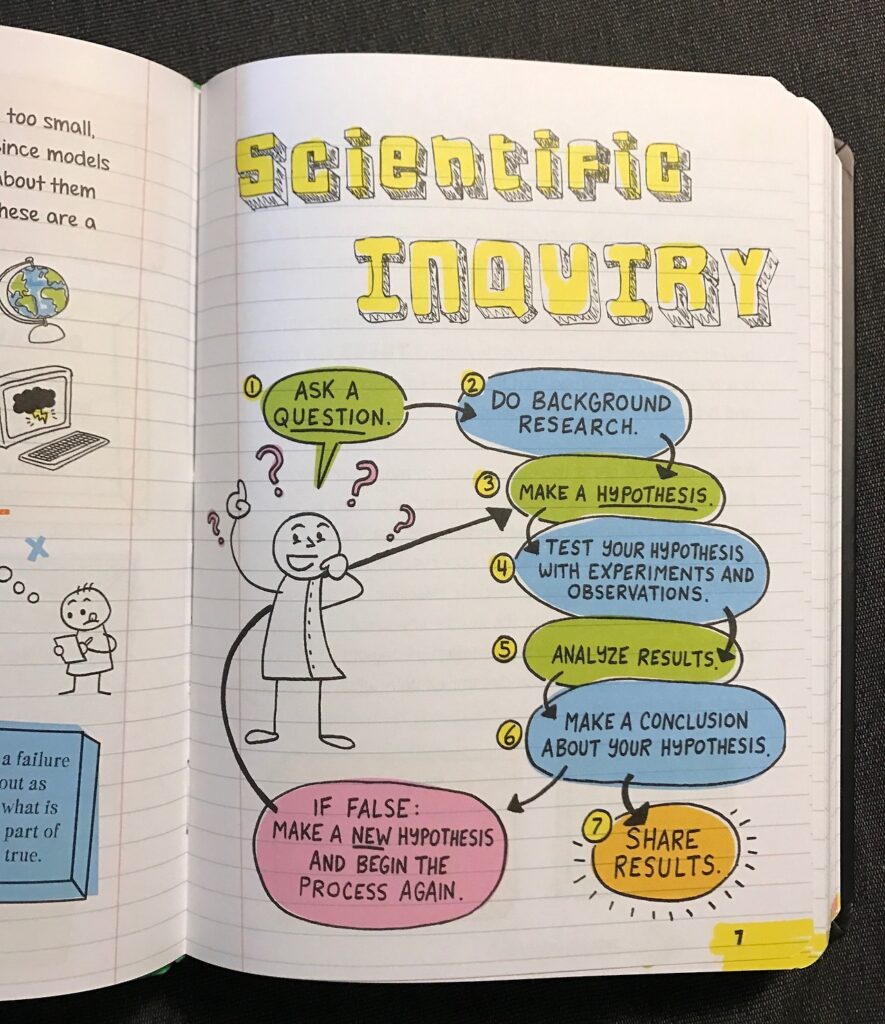


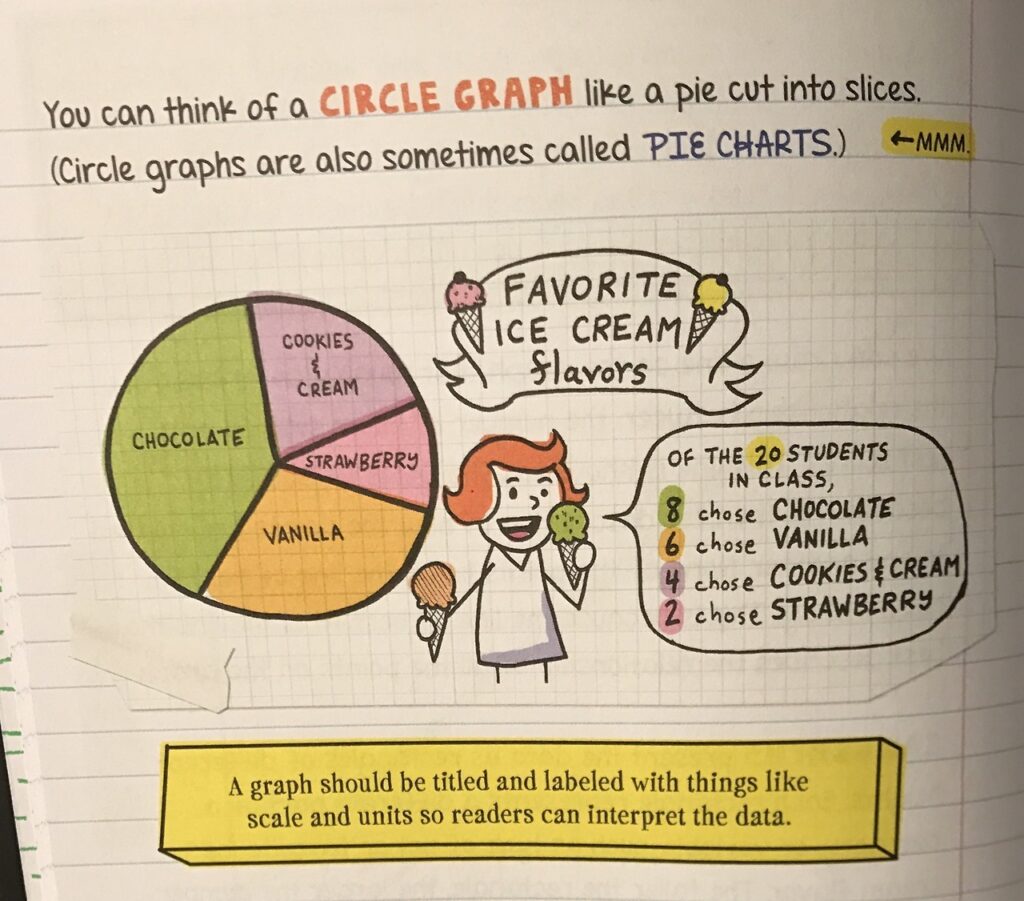
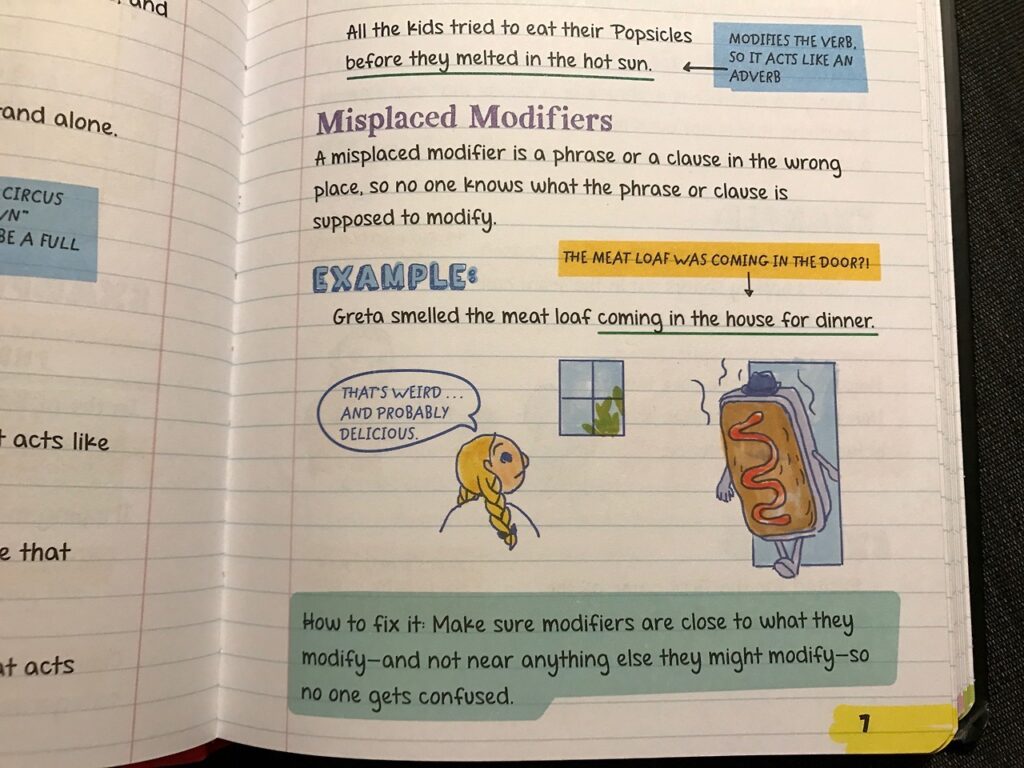
Everything You Need to Ace … The Complete Middle School Study Guides
by Workman Publishing
Abrams ComicArts
2017, 240 pages, 6.9 x 1.0 x 9.4 inches, Hardcover
Looking through these books, I find myself wanting to shout out phrases I haven’t thought of in decades: the Triangular Trade! Crispus Attucks! Isthmus of Panama!
The “Everything You Need to Ace…” series aren’t text books; they’re supposed to be the notes you failed to take in class. Flip through them before a test, or keep them by the sofa to pick up from time to time.
My middle-school informant feels they’re roughly accurate for what he’s studying in school. An adult informant — okay, me — feels they’re also useful if you find yourself parenting a middle schooler and want to not seem completely ignorant, but it’s been a really long time since you studied the Meiji Restoration.
The breezy format can lead to oversimplification: for example, the overthrow of Queen Liliʻuokalani by American businessmen and the US Marines, which destroyed the Kingdom of Hawaii, has an anodyne description here. Each book has a detailed table of contents, but no index.
– Sara Lorimer
09/10/2409 September 2024
Measurement
Tools for Possibilities: issue no. 103
Once a week we’ll send out a page from Cool Tools: A Catalog of Possibilities. The tools might be outdated or obsolete, and the links to them may or may not work. We present these vintage recommendations as is because the possibilities they inspire are new. Sign up here to get Tools for Possibilities a week early in your inbox.
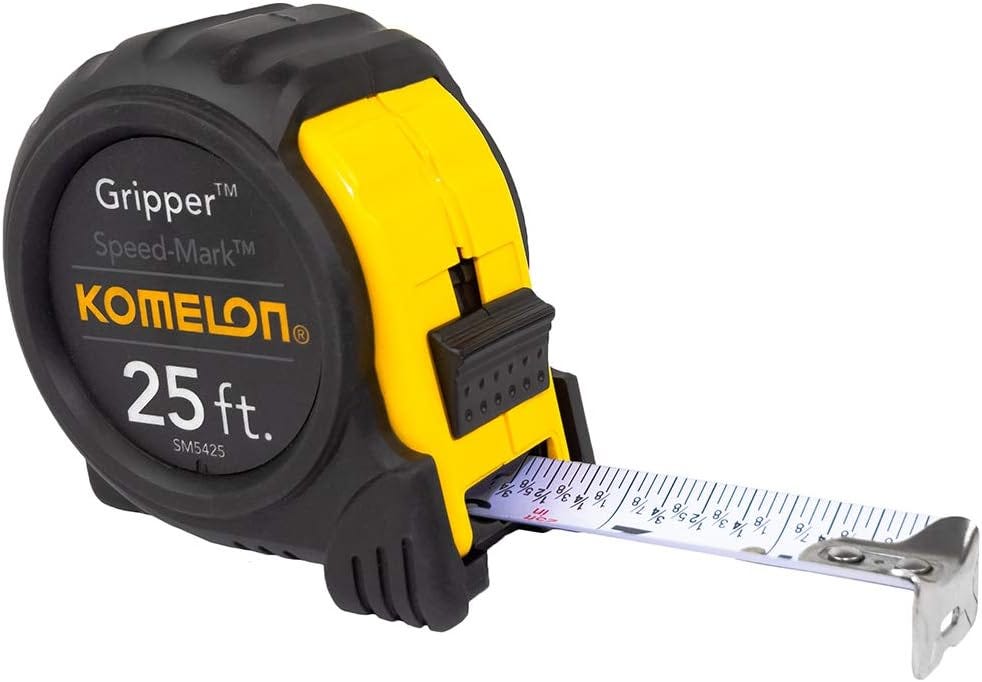
Easy-to-read tape
Because of improvements in tape-measure technology, even a cheap fat 25-foot tape can extend in the air without support ten feet or more, can deal with 99% of my needs, and will roll up into a pocketable 3-inch case. I don’t even bother with tapes less than 25 feet now. I like the Komelon Speed Mark because every inch is labeled with fractional graduations in 1/8″ increments (and hashes to 1/16); for instance, the tape will be marked: 13F, 5 and 5/8 inches. In bold easy to read fonts. No figuring needed. A thumbable button will slow its rewind to prevent damage during its return. This one is not expensive and well made. — KK

No-math spacing
A rivet spacer was originally designed for evenly spacing rivets on aircraft, but it can be used for evenly spacing anything, from buttons on a sweater, to finish nails on those infernal Ikea drawers you are trying to put together nicely. It completely eliminates any need for calculations and weird fractions. You just stretch the fan to the end points with the number of holes you want. It is one of those tools that you never knew you missed until you use it once. — Alexander Rose
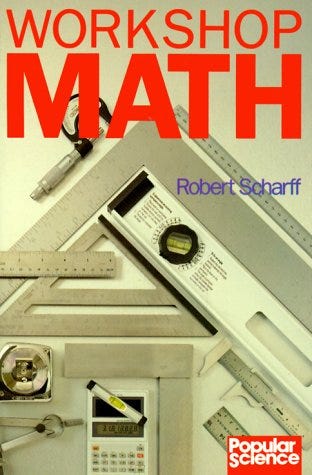
Building with math
About five years ago I began to build my own house. It’s amazing just how much of a house is built on maths! I was never very good at maths at school and I would often have to dredge my deepest memories of that time trying to remember whether it was two Pi x R or Pi x R squared?
My wife was getting pretty fed up with me continually giving her bills of quantities and so on to work out, and bought me this book as a gift. I love it! It’s now the most dog eared book on my workshop shelf and even though the house is built and finished I still refer to it whenever I’ve got one of those “I’m sure there must be an easier way of working this out” problems.
It contains tons of useful stuff from calculating loads on beams over a given distance to calculating the thermal efficiency of a wood burner. It really does cover a lot of ground. Only problem I have found with it is that being from the UK, where we generally work in metric, a lot of the tables in the book are in imperial measurements.
However, Scharff usually gives the formulae as well as the tables so it was usually pretty easy just to do the workings in millimetres or kilogrammes or whatever. If they had used books like this when I was at school I reckon I would have seen the relevance and taken to it much more than I did. Anyway, I think it’s a must-have now and wish I had found it years ago. — George Graham
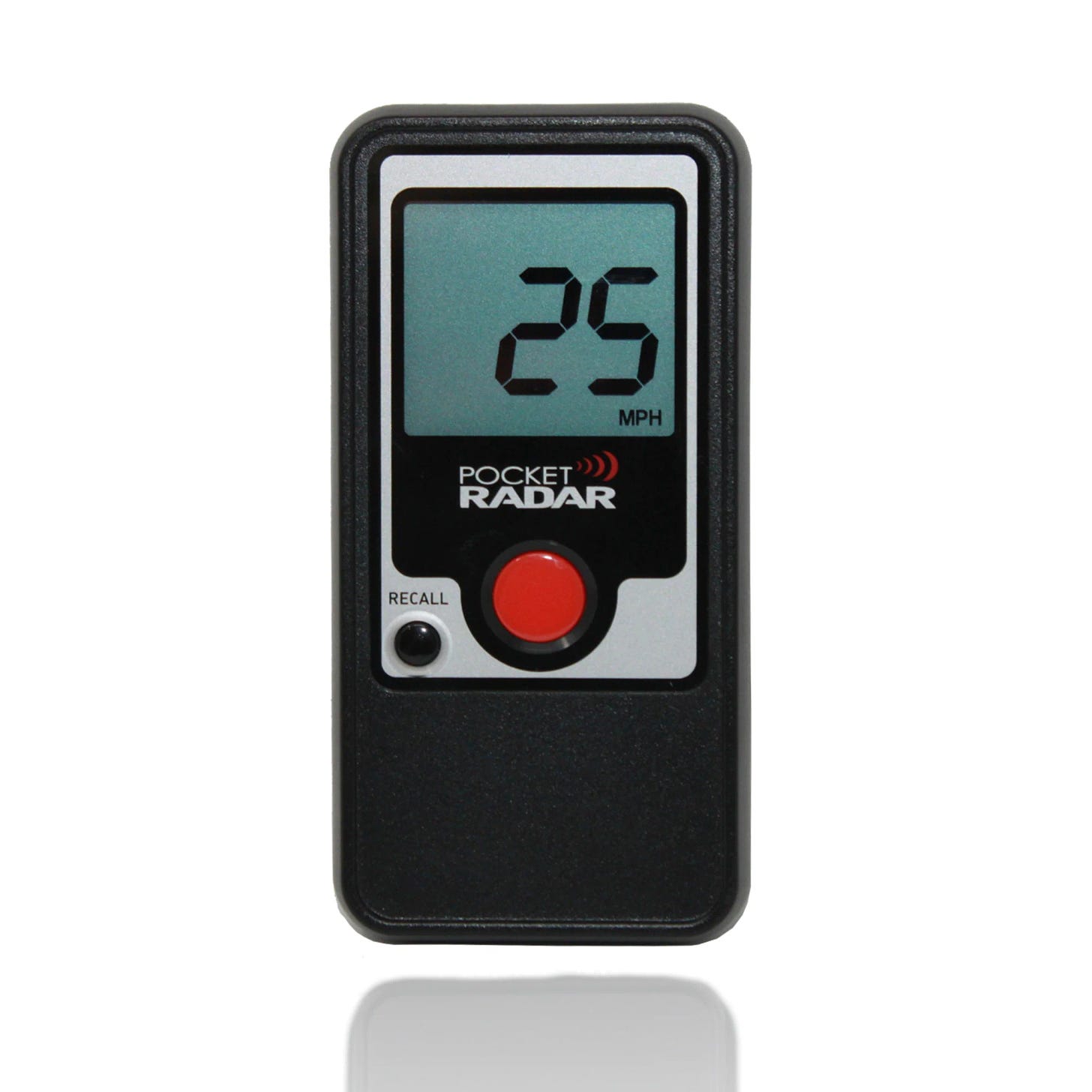
Hand held speed checker
Hold this thing in your hand, aim it at a fast, moving object and it instantly gives you the speed of that object — either coming or going. Not only big objects like cars, but little ones like golf balls, too. This little gizmo’s accuracy matches that of police scans, so you can check for speeders on your block.
The main use of the Pocket Radar is for sports, which is what we use it for — measuring ball/running speeds for performance improvement. It’s super easy to use. And it will pick up all kinds of things I had no idea radar detected. We were able to get accurate measurements on arrows in flight! Not everyone needs to measure speed, but for most who do, this pocket device is all you need. — KK
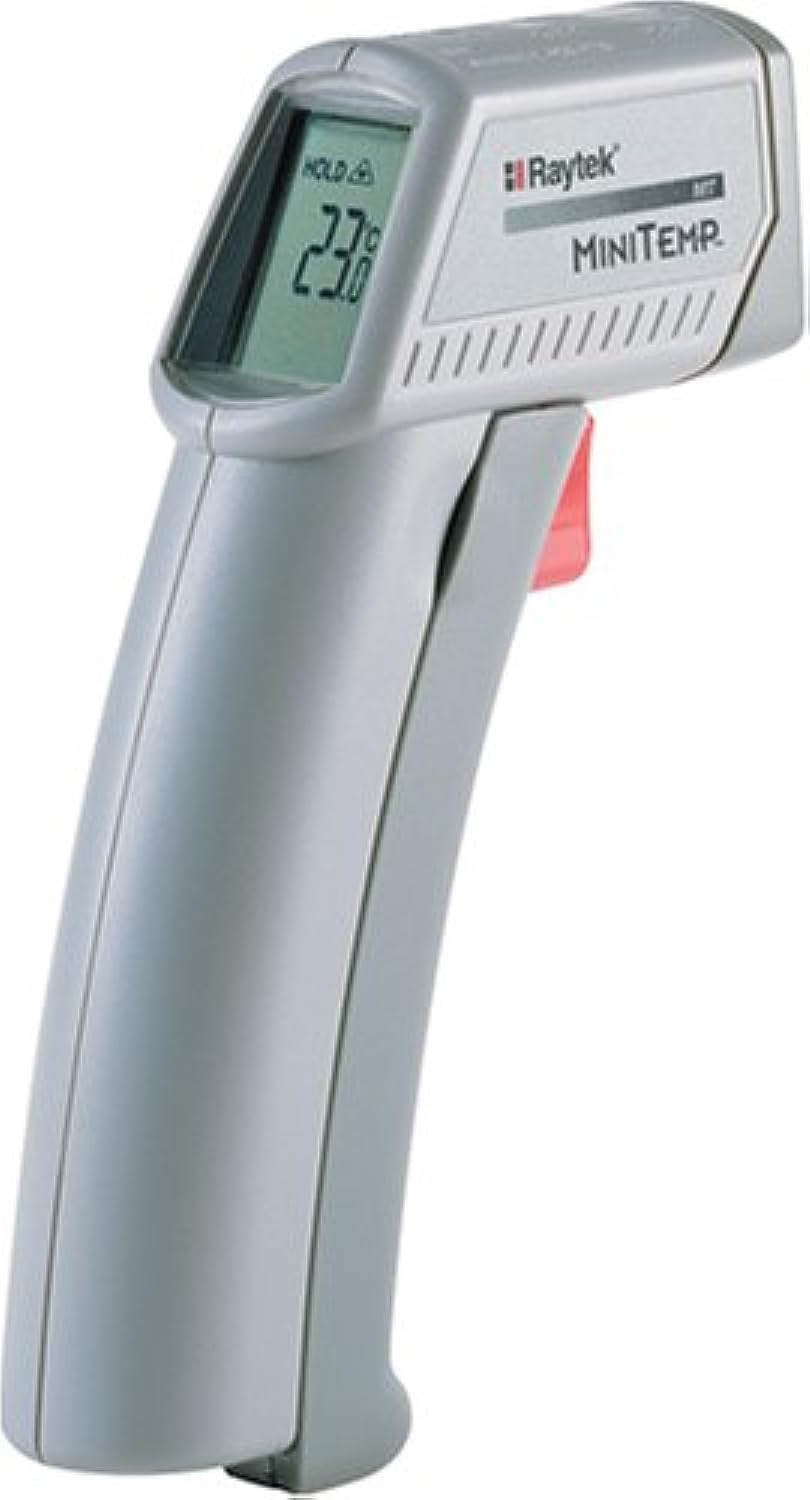
Non-invasive thermometer
Raytek Mini Non-Contact Thermometer
I borrowed one of these non-contact thermometers to test the heat dissipation around a new fireplace I’m finishing. The device worked so well, I found myself running around my house taking the temperature(s) of lots of things I’d often wondered about but had no way of investigating. For instance, I was curious about the results of extra insulation I put in last year. I also found myself using it to follow heat contours around the house. I could follow heat contours in the air by using this device to measure the temperature of the skin of my hand. This method made a rigorous investigation into energy conservation fun as well as informative.
One attribute of IR thermometers I really appreciated is their instantaneous response, even across a distance. Since the device is based on an infrared (IR) light sensor, there is no lag, no hysteresis (like a thermostat), no memory, no need to even be close to the surface being measured, which is a lot different from how I am used to thinking about temperature.
With the ST pro model it was like I could reach across the room and touch the wall in the back of the fireplace to see how hot the fire was getting. I discovered all kinds of readings that affected my fireplace design. For instance it was around 400 degrees near the gas pipe I was sealing with fireplace caulk. I found that it got to a max of 70 degrees above the fireplace where I was thinking of mounting a plasma TV; that it was a max of 100 degrees about a foot in front of the fireplace at the level of the hearth, and that there was a temp gradient of about 40 degrees to the side edges of the hearth. (I figure that gradient was probably not a steep enough to cause levels of thermal stress that would crack the slate I was planning to use for the hearth). However I was able to measure a much sharper gradient across the metal face of the zero-clearance fireplace, where I planned to mount tile with special heat-tolerant silicon adhesive (thus needing to confirm the max temp of the metal face at around 210 degrees after 2 hours of fire). And so on.
As a homeowner it may be hard to justify buying one, but as a nerd (and especially if I had kids) I want one around. For me it has something to do with an Internet-biased mentality — I hear an obscure concept, or someone has a question, and I almost reflexively reach for Google. Now it’s like that for my home. Is that frying pan at exactly the right temperature for pancakes? Wait, I can get the IR thermometer out of the kitchen drawer… — Rick Botman
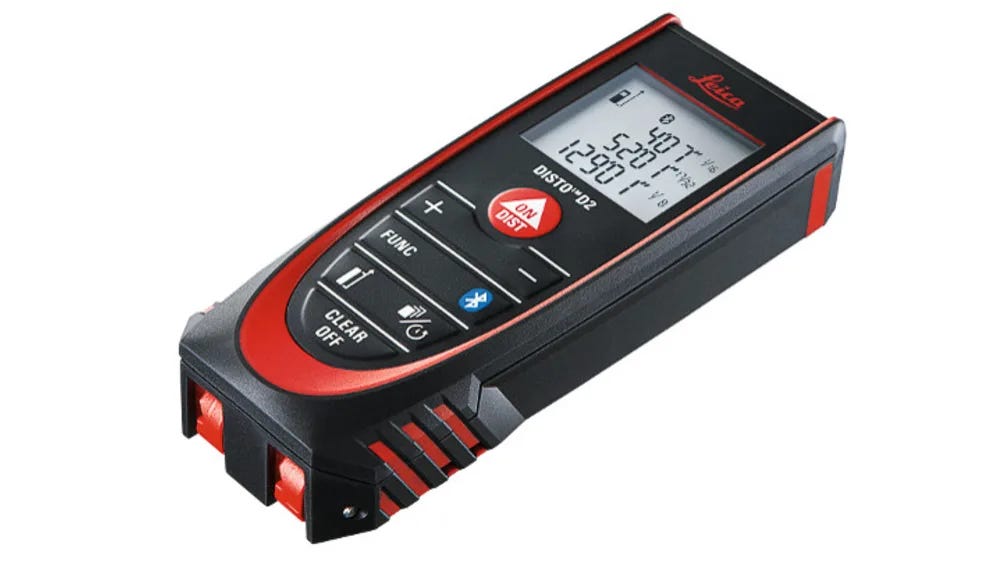
Laser based measuring tool
Leica Disto 2 Laser Distance Measurer
The Leica DISTO 2 allows me to measure accurately from about 1/16 inches to about 197 feet. It can calculate from the measurement, as appropriate, the area or volume. It also has the ability using the Pythagorean theorem to calculate indirect lengths.
The small size, in inches, (4.4L x 0.9D x 2.2W) is conveniently to carry and use. The accuracy requires a steady hand but tool quickly obtains a measurement.
I use the D2 for my construction projects and find it helpful in my photography in setting the aperture to get the depth of field I want.
The combination of small size, accuracy, ease of use and low price is not matched to my knowledge. — Walter Smith
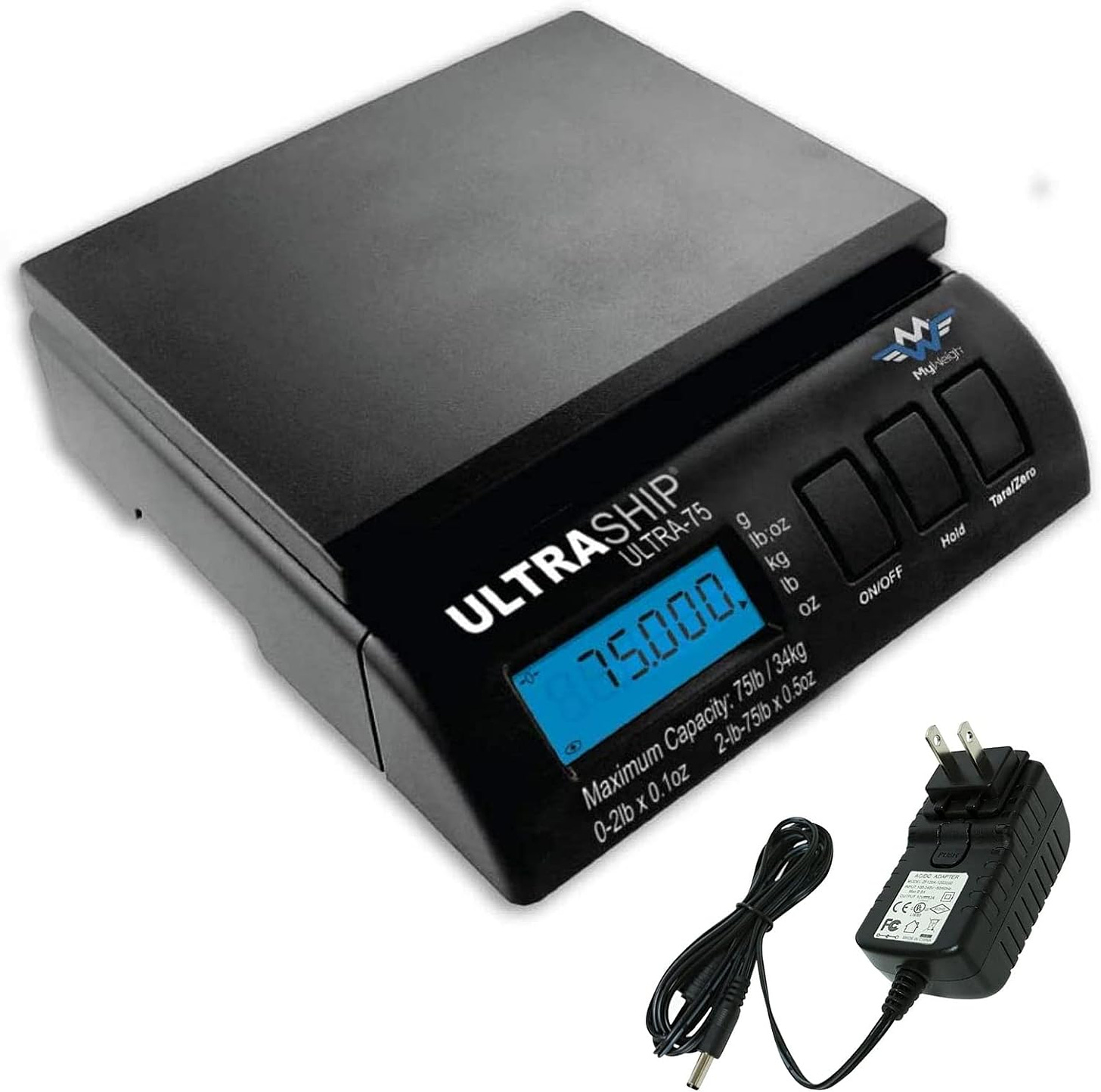
Weighs big packages & food
I have been considering buying a kitchen scale for quite a while, but was often underwhelmed with what was out there. Unlike a garden-variety kitchen scale, which typically weighs up to only four pounds, the Ultraship can handle up to 55 pounds. It reads in ounces, pounds, grams or kilos, so it’s perfect for the kitchen, but can also be used for shipping packages and mail. Heck, you could even weigh a small child on it. Also, it features a just plain brilliant design:i f you are weighing a really big monster package that blocks the display, you can detach it! The entire face of the unit can be unclipped and pulled away from the scale with a 5-foot-long extension cord.
When I compared the Ultraship to a laboratory-grade scale used at my company, this one went gram for gram with the lab scale. Within the 0-2 pound range, it is actually accurate to essentially 0.035 ounces as opposed to the 0.1 ounces in the specification. If you take baking seriously, this is the only way to go. I fish quite a bit, so it’s nice to be able to weight those 30-pound striped bass. From 2-55 pounds, the scale is accurate to within 0.5 ounces. While my initial motivation was for the kitchen, I have also been using it for boxes and packages. — Aram Salzman
09/9/24ALL REVIEWS
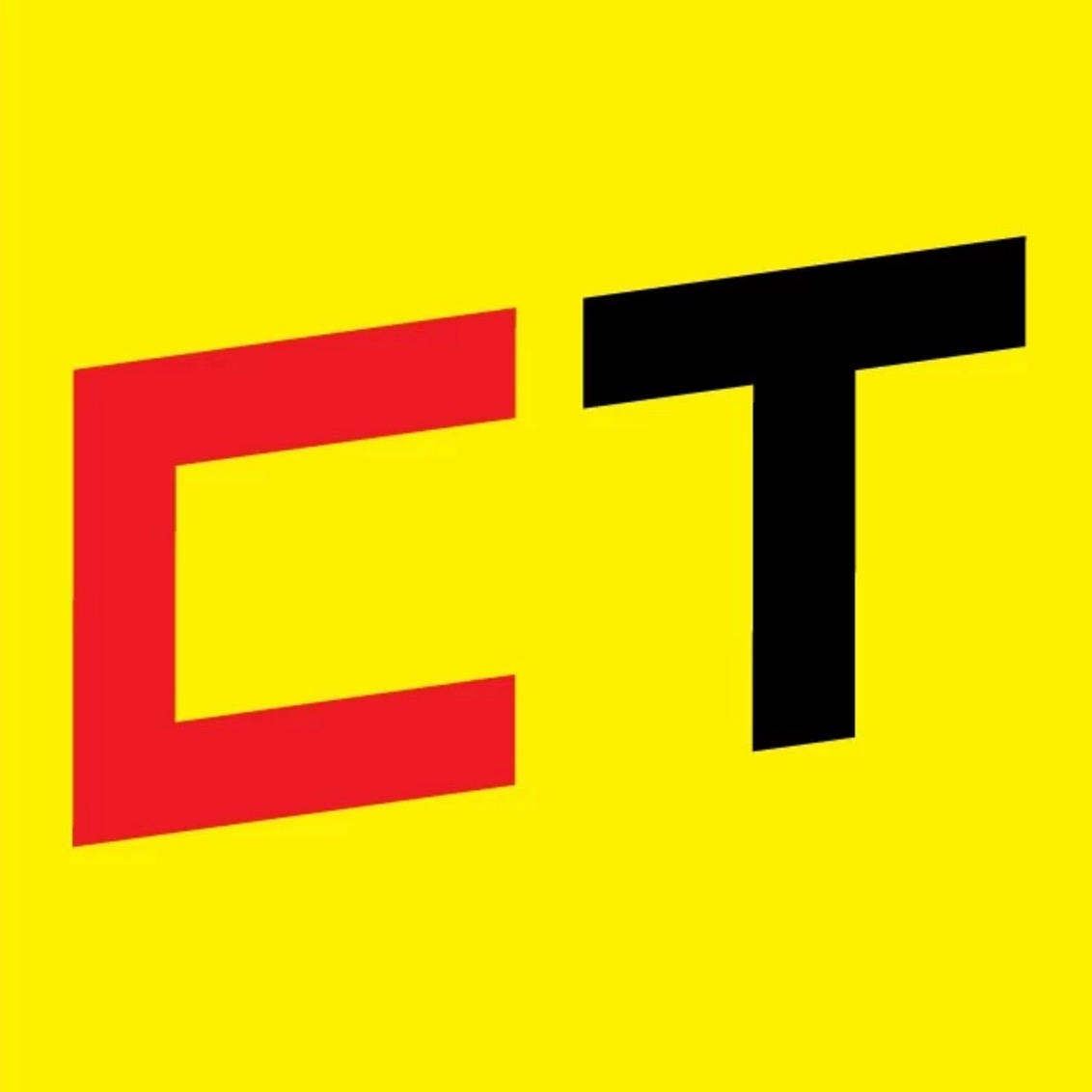 09/7/24
09/7/24
Book Freak 169: The True Believer: Thoughts on the Nature of Mass Movements
Eric Hoffer’s analysis of how mass movements attract and maintain followers
 09/4/24
09/4/24
Gar’s Tips & Tools – Issue #183
Access to tools, techniques, and shop tales from the diverse worlds of DIY
EDITOR'S FAVORITES
COOL TOOLS SHOW PODCAST
WHAT'S IN MY BAG?
11 September 2024
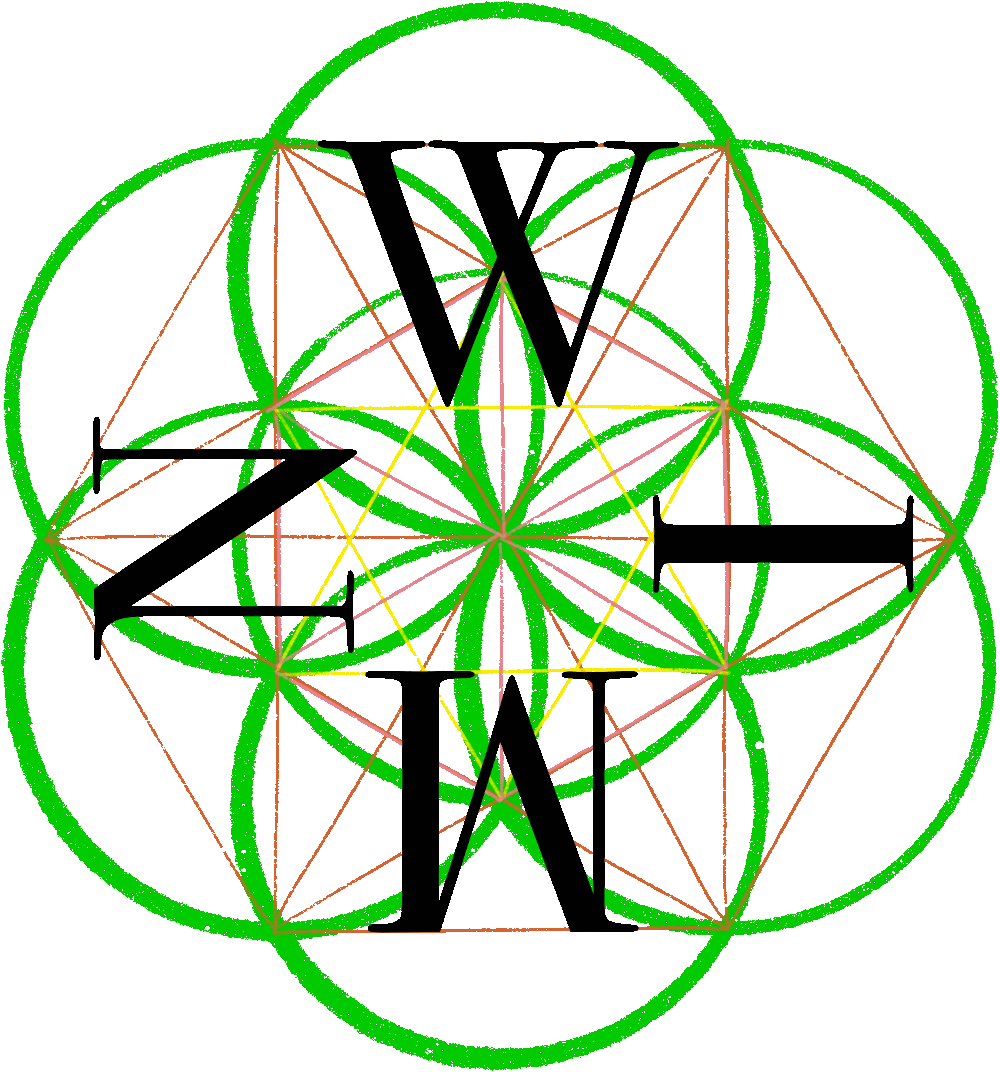
ABOUT COOL TOOLS
Cool Tools is a web site which recommends the best/cheapest tools available. Tools are defined broadly as anything that can be useful. This includes hand tools, machines, books, software, gadgets, websites, maps, and even ideas. All reviews are positive raves written by real users. We don’t bother with negative reviews because our intent is to only offer the best.
One new tool is posted each weekday. Cool Tools does NOT sell anything. The site provides prices and convenient sources for readers to purchase items.
When Amazon.com is listed as a source (which it often is because of its prices and convenience) Cool Tools receives a fractional fee from Amazon if items are purchased at Amazon on that visit. Cool Tools also earns revenue from Google ads, although we have no foreknowledge nor much control of which ads will appear.
We recently posted a short history of Cool Tools which included current stats as of April 2008. This explains both the genesis of this site, and the tools we use to operate it.

